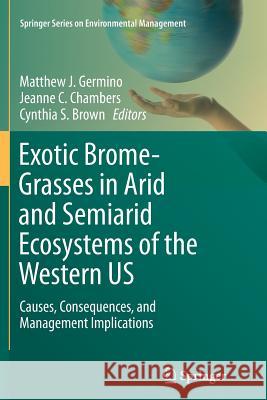Exotic Brome-Grasses in Arid and Semiarid Ecosystems of the Western Us: Causes, Consequences, and Management Implications » książka
topmenu
Exotic Brome-Grasses in Arid and Semiarid Ecosystems of the Western Us: Causes, Consequences, and Management Implications
ISBN-13: 9783319797014 / Angielski / Miękka / 2018 / 475 str.
Exotic Brome-Grasses in Arid and Semiarid Ecosystems of the Western Us: Causes, Consequences, and Management Implications
ISBN-13: 9783319797014 / Angielski / Miękka / 2018 / 475 str.
cena 578,30 zł
(netto: 550,76 VAT: 5%)
Najniższa cena z 30 dni: 574,29 zł
(netto: 550,76 VAT: 5%)
Najniższa cena z 30 dni: 574,29 zł
Termin realizacji zamówienia:
ok. 20 dni roboczych.
ok. 20 dni roboczych.
Darmowa dostawa!
Kategorie:
Kategorie BISAC:
Wydawca:
Springer
Seria wydawnicza:
Język:
Angielski
ISBN-13:
9783319797014
Rok wydania:
2018
Wydanie:
Softcover Repri
Ilość stron:
475
Waga:
0.67 kg
Wymiary:
23.39 x 15.6 x 2.49
Oprawa:
Miękka
Wolumenów:
01
Dodatkowe informacje:
Wydanie ilustrowane











